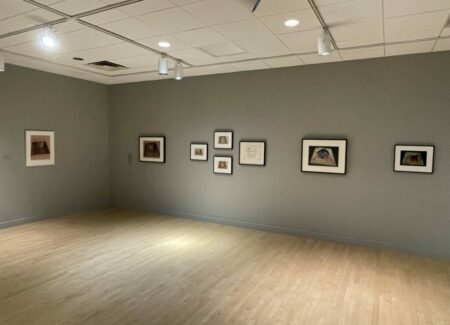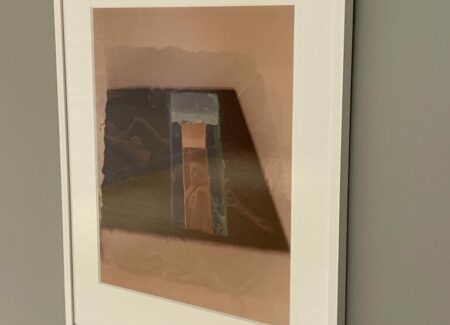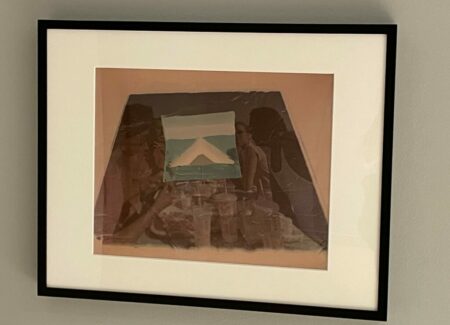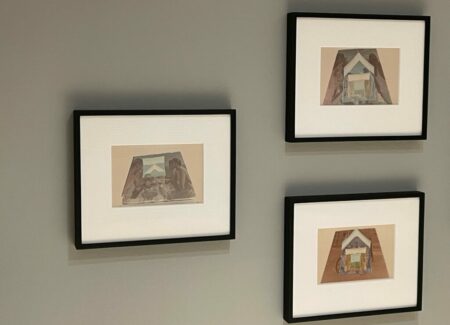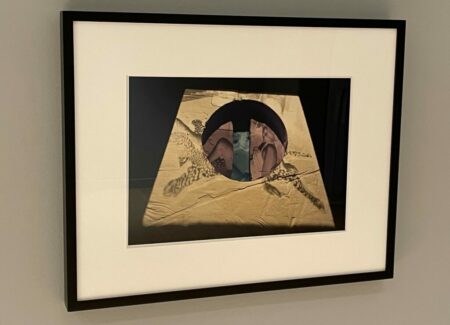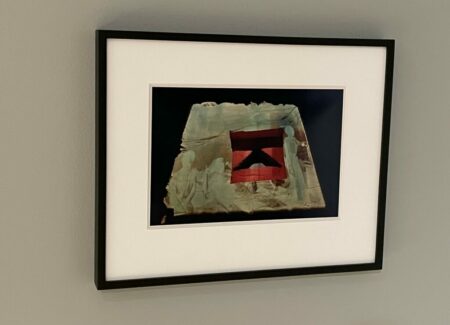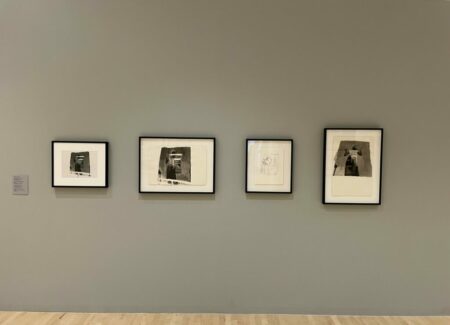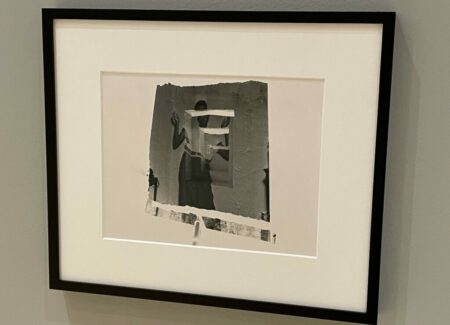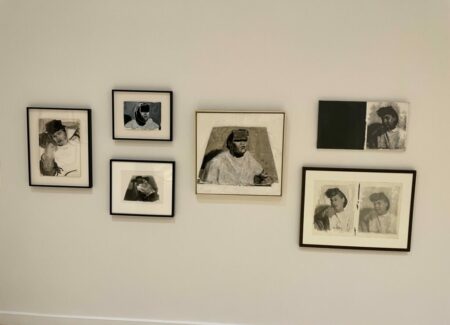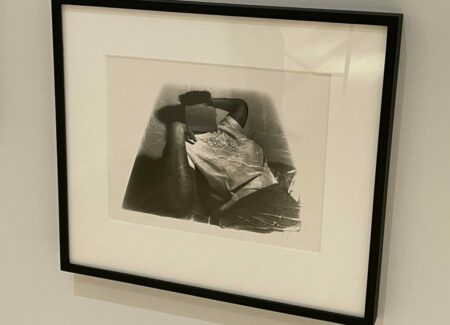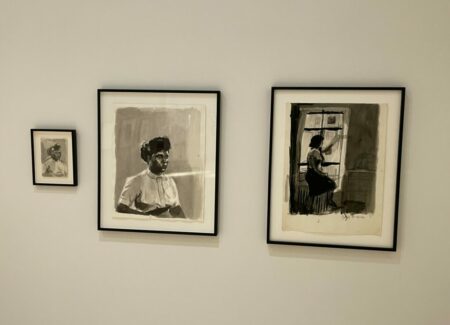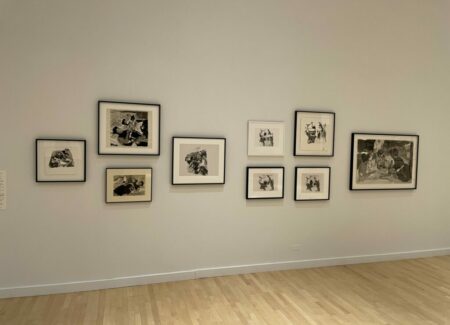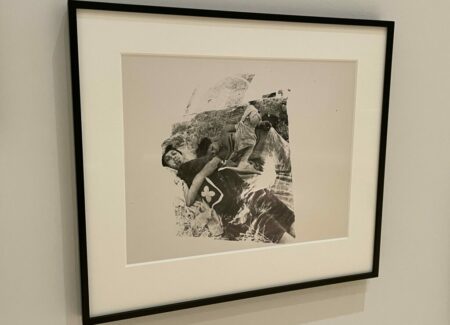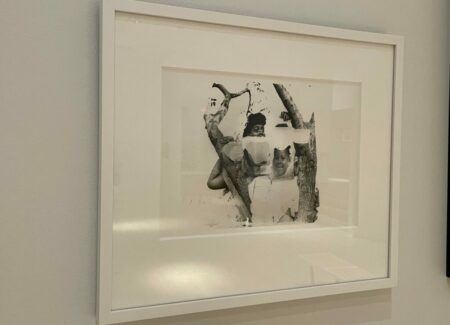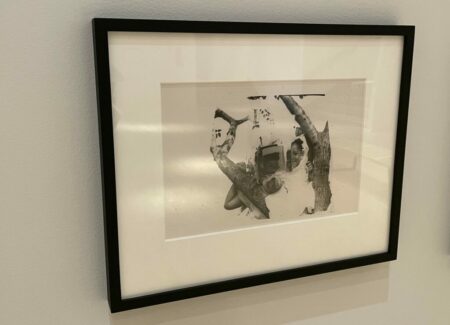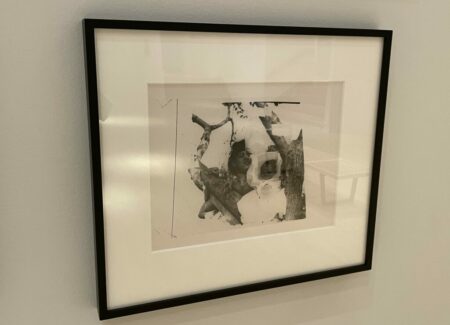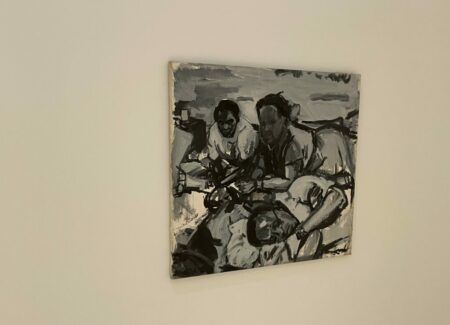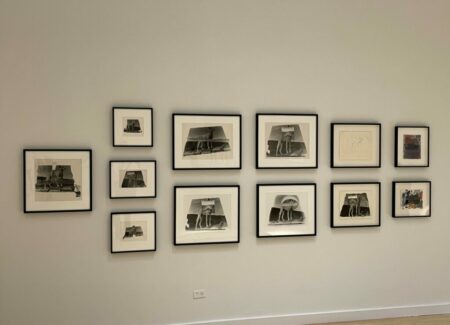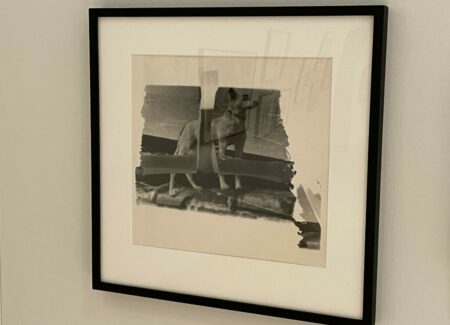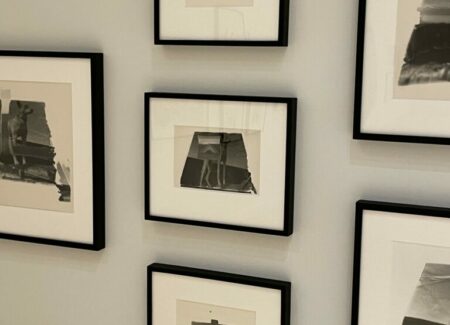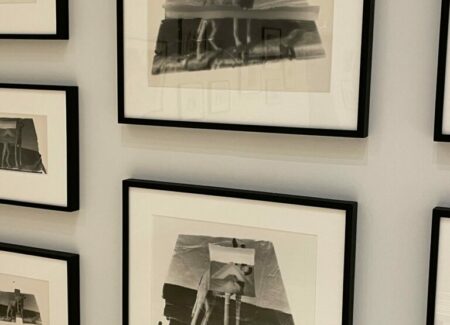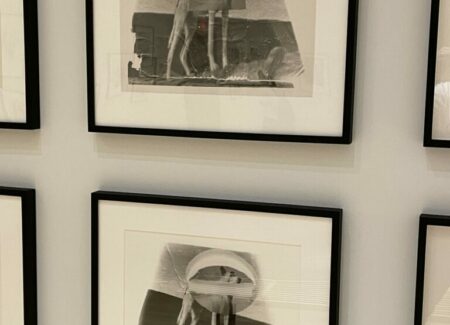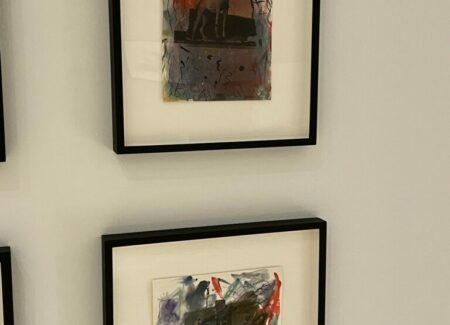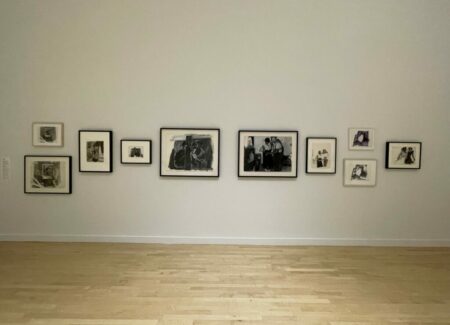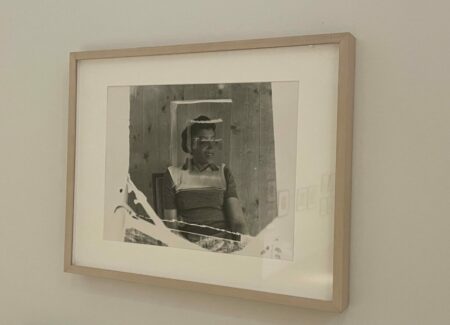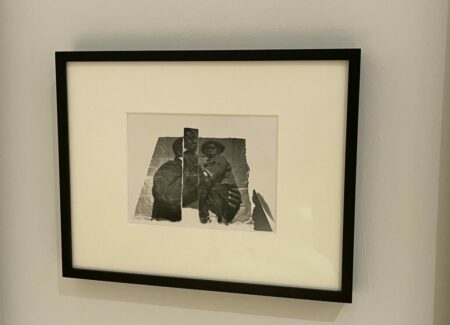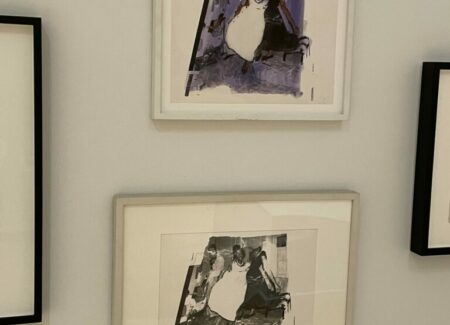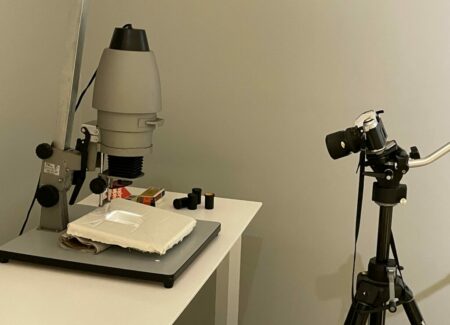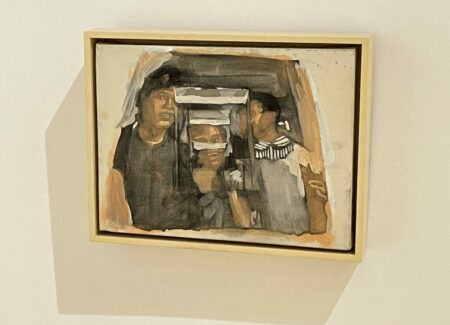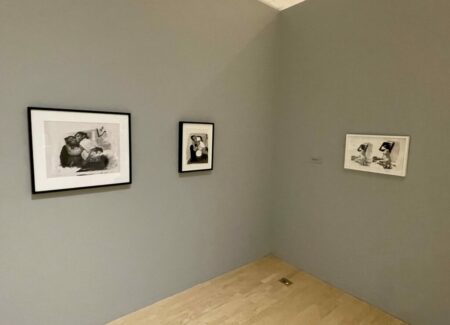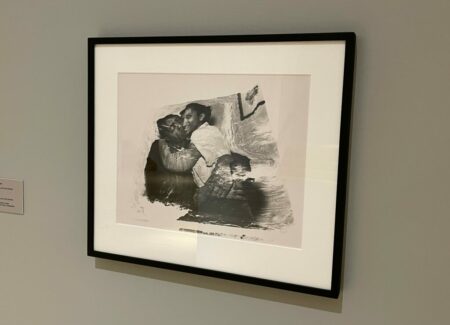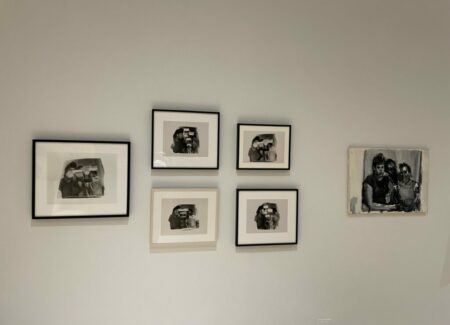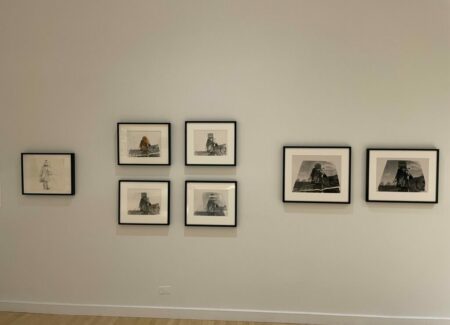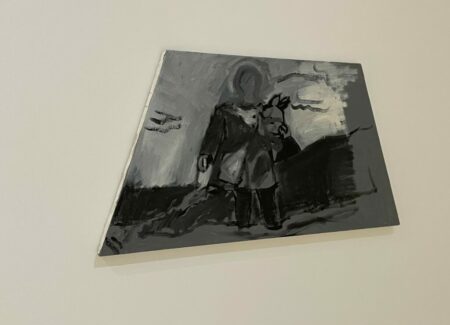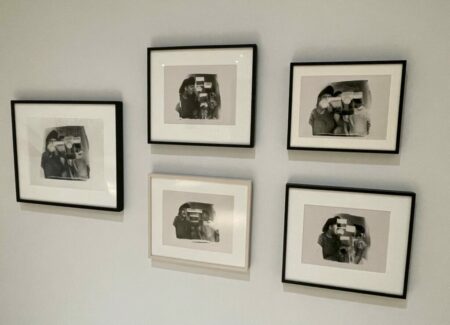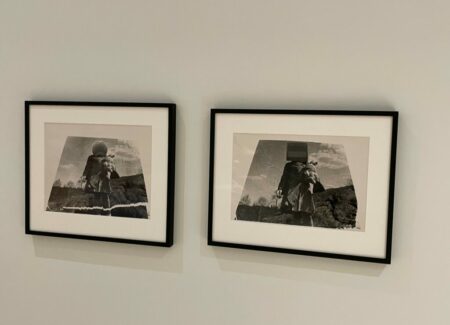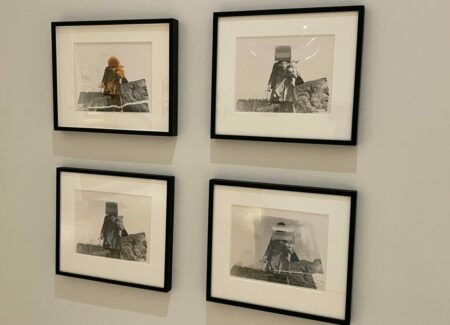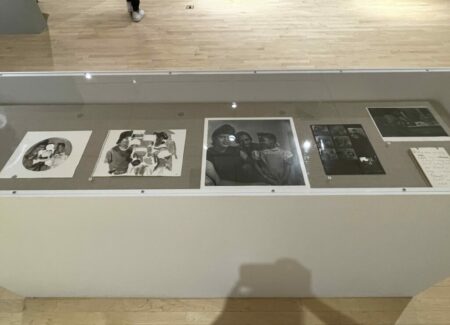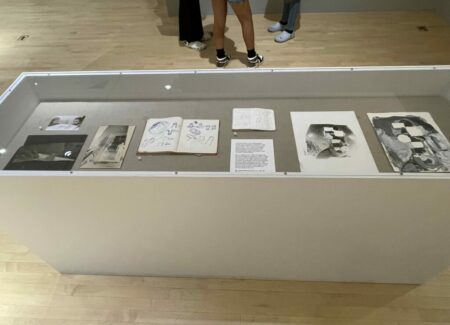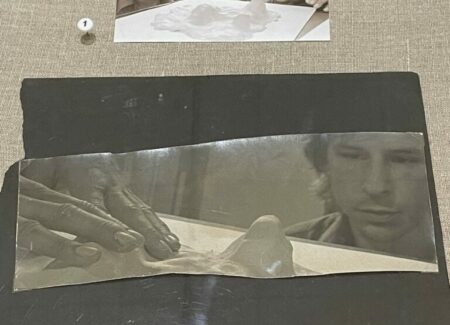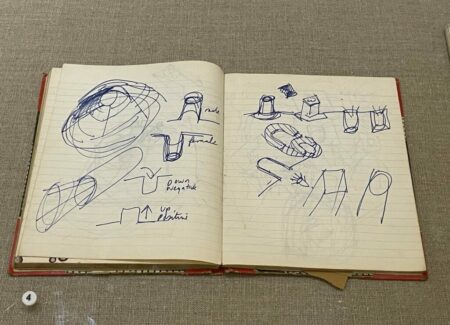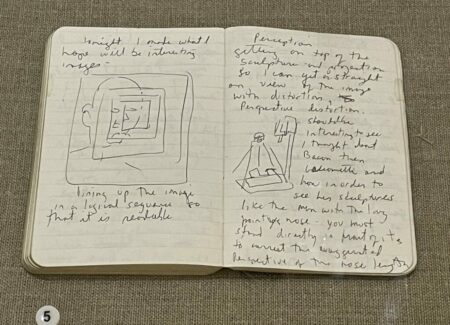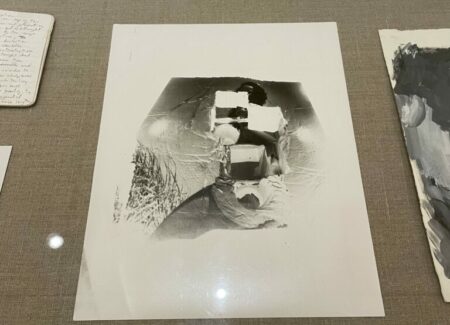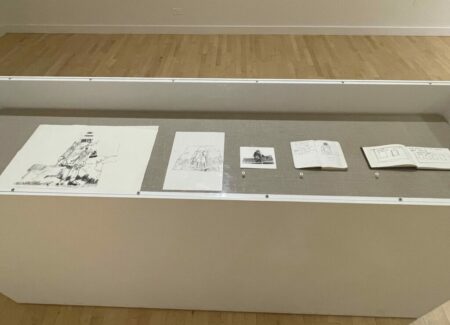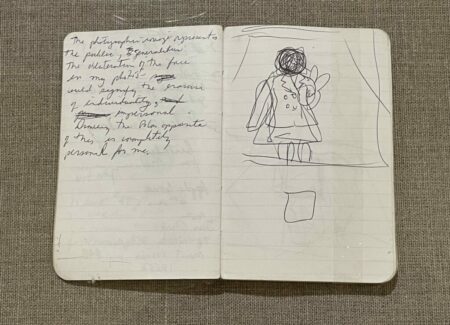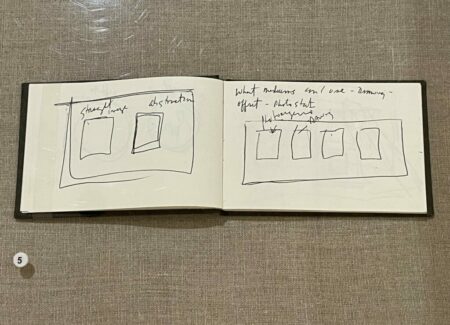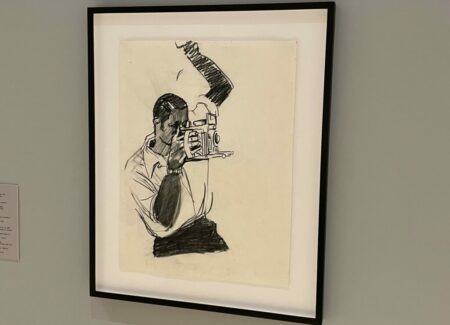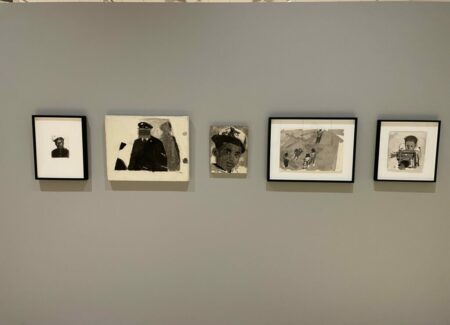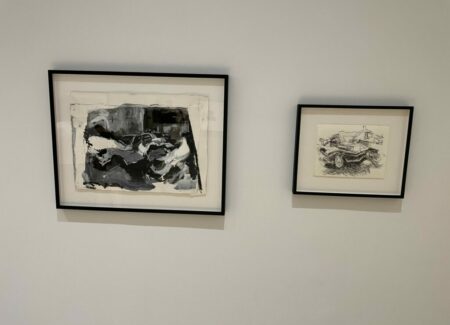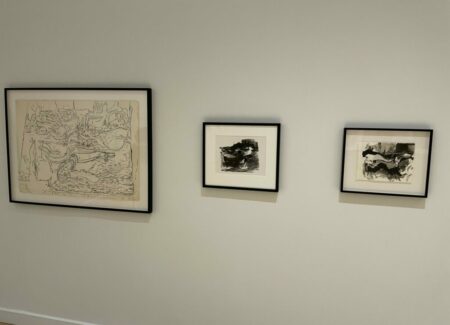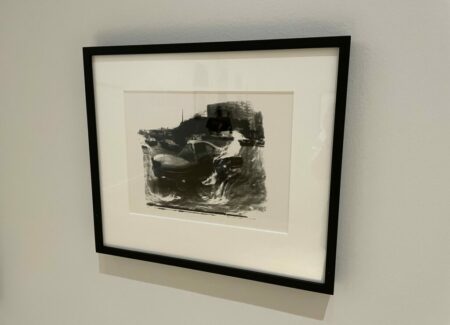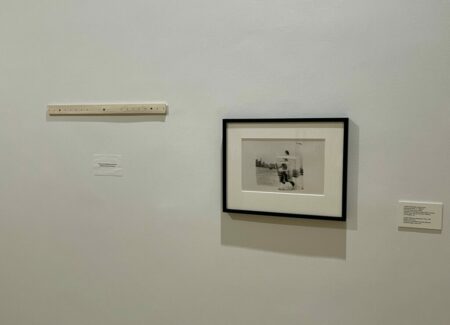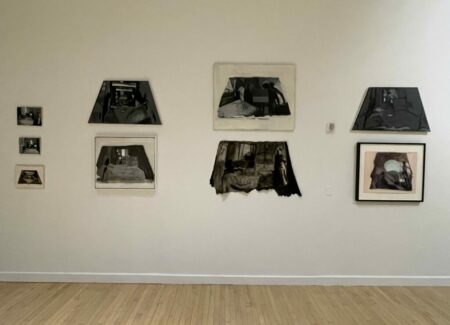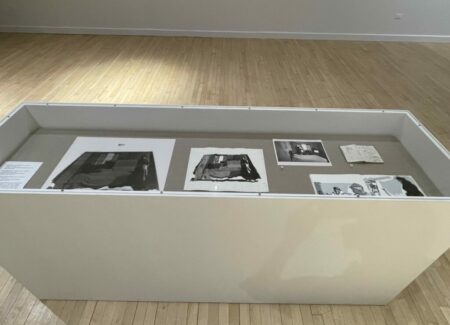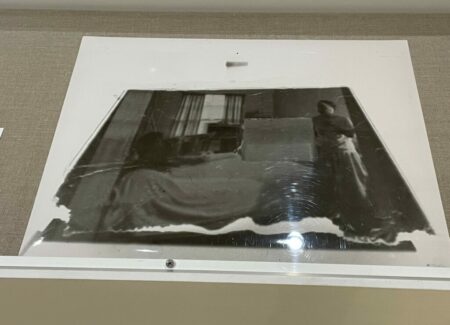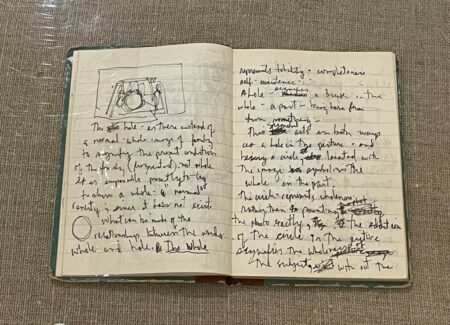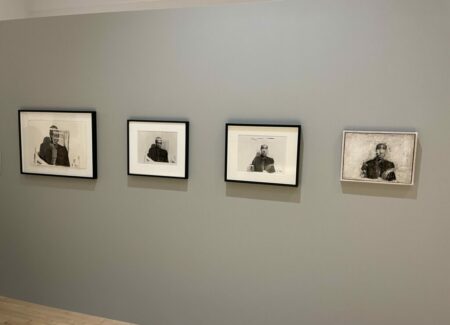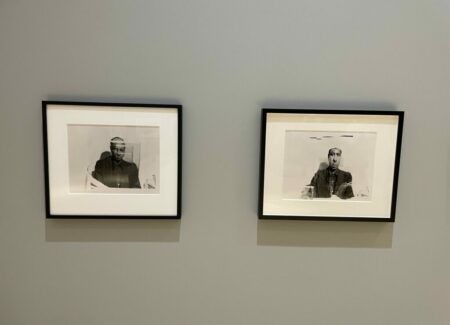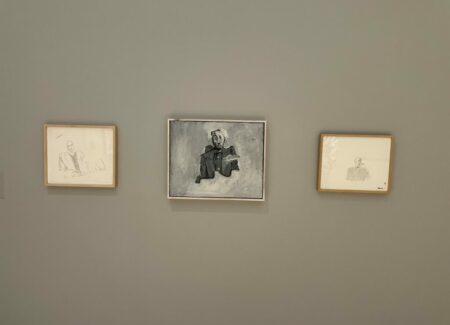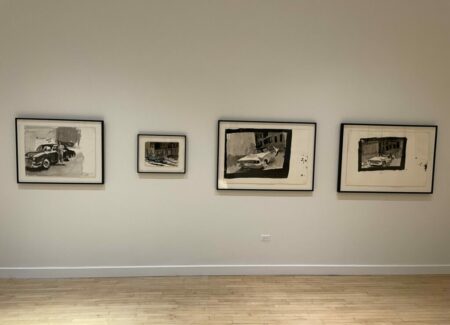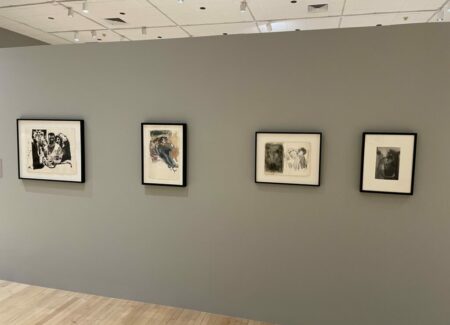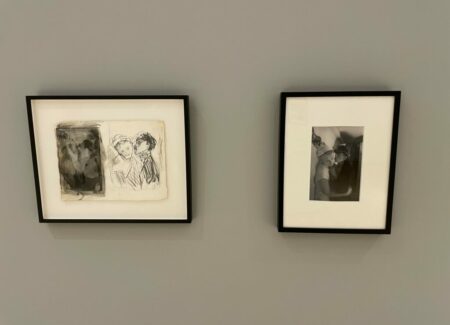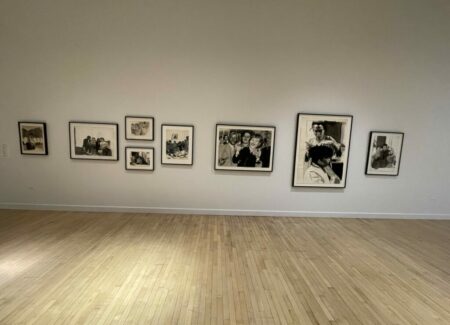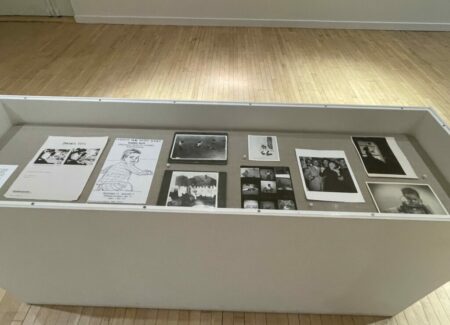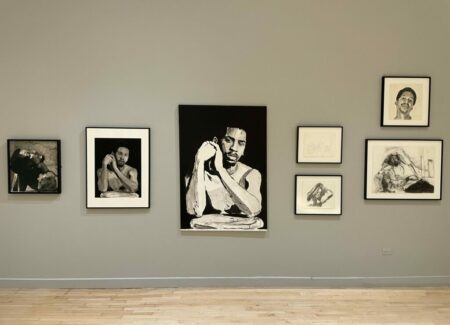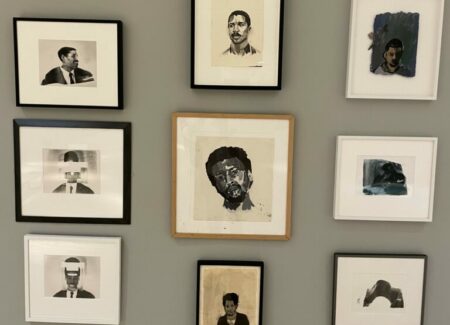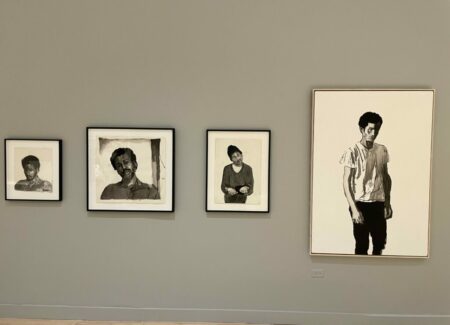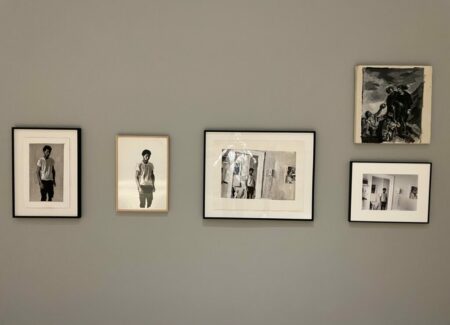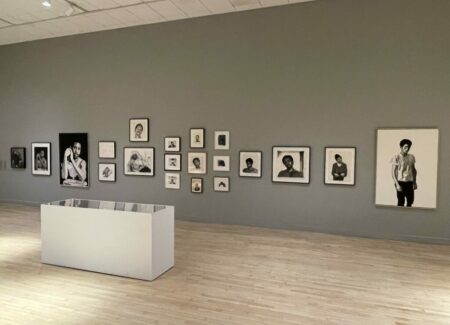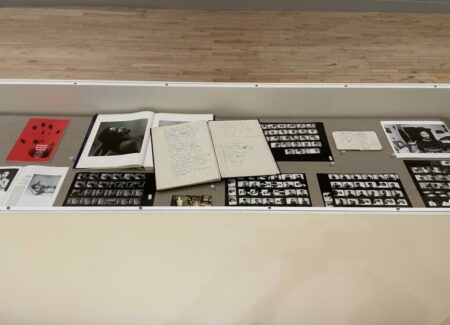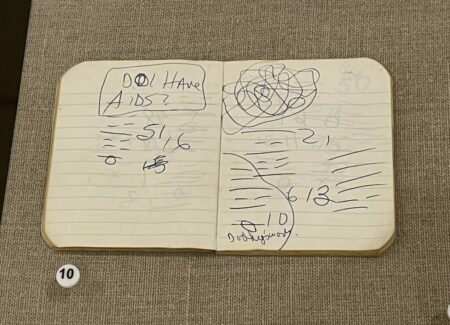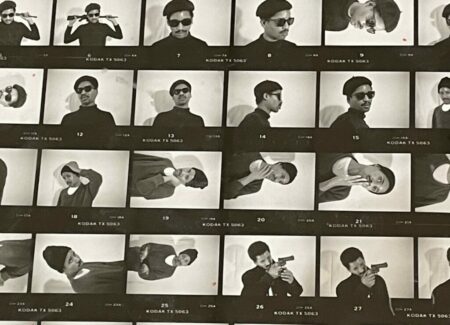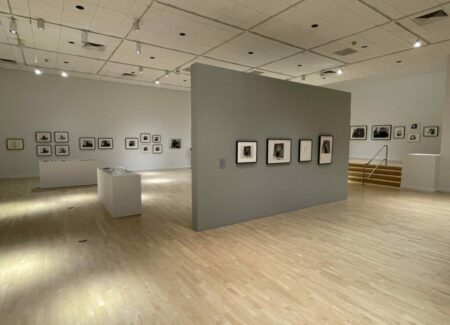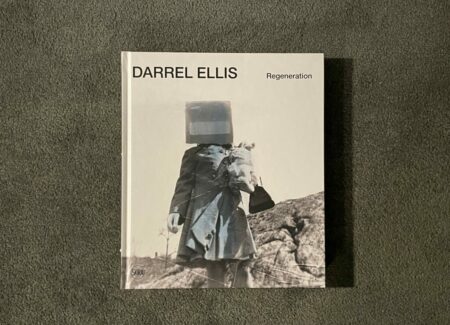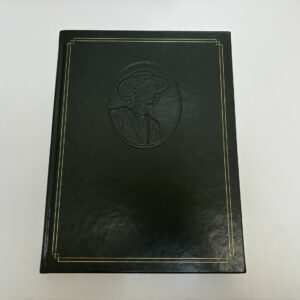JTF (just the facts): A retrospective exhibition gathering together works in various mediums, hung in a series of three large divided gallery spaces. The show was jointly organized by the Baltimore Museum of Art and the Bronx Museum of the Arts. The exhibit was curated by Antonio Sergio Bessa and Leslie Cozzi.
The following works have been included in the exhibition, with a particular focus on the photographic works:
- 36 gelatin silver prints, 1980-1990, 1982-1984, c1987-1991, 1988-1991, 1989-1990, 1989-1991, c1990, 1991
- 6 gelatin silver prints with pen, brush, colored inks, c1987-1991, 1989-1991, c1990
- 1 photostatic emulsion w/graphite, pen, black ink, collage, 1982-1984
- 7 chromogenic prints, 1988-1991
- 1 inkjet print by Allen Frame, c1990
- 1 installation of enlarger, camera, and other equipment
- vitrine: 3 gelatin silver prints by Thomas Ellis, c1953/2022, c1953/1989-1991, c1950/c1981, 2 ink wash, 1 journal entry
- vitrine: 3 gelatin silver prints by James Wentzy, 1979 , 2 notebooks, 1 gelatin silver print, c1987-1989, 1 paint collage
- vitrine: 2 pen ink drawings, 1 exhibition booklet, 2 notebooks
- vitrine: 2 gelatin silver prints, 1987-1991, 1 ink, graphite, 1 notebook, 1986, 1 artist’s book
- vitrine: 2 exhibition posters, 6 gelatin silver prints by Thomas Ellis, c1948-1950/1983, c1950-1955, 1 invitation card
- vitrine: 1 catalog, 1 book with photograph of Ellis by Peter Hujar, 1 contact sheet by Allen Frame, 4 contact sheets, 1990-1991, 1 gelatin silver print, 1989-1991, 1 notebook,
- 90 additional works in other mediums, including pen, black ink, brush ink, gouache, screenprint, graphite, oil paint, acrylic paint, charcoal, crayon, watercolor, etc.
A catalog of the exhibition has been published by Skira (here). Hardcover, 22.5×26 cm, 192 pages, with 200 color reproductions. Includes essays by Leslie Cozzi, Makeda Best, Antonio Sergio Bessa, Allen Frame, Linda Owens, Scott Homolka, and Kyle Croft. (Cover shot below.)
Comments/Context: It’s not often that a museum retrospective of an artist we might primarily think of as a photographer includes more works made in nearly a dozen other mediums, from pencil and ink to watercolor and oil paint, than it does actual photographs. And a quick scan of the rooms in this impressive and insightful survey of the work of Darrel Ellis delivers just this unexpected realization, making it clear that in a sense, we had it wrong all along. As seen here, it’s immediately obvious that any kind of siloed definition of Ellis as a photographer, painter, sculptor, printmaker, or anything else fundamentally misunderstands and misinterprets what he was thinking and doing. Ellis was instead drawn to exploring the translations, transformations, and mediations that take place between expressive mediums, and in the artistic possibilities that lie in those less defined interstitial zones.
Ellis’s personal backstory provides an important framework for his eventual approach to art making. Ellis’s father Thomas was killed by police a few weeks before Darrel was born, leaving a void at the center of the young man’s life. He spent his early artistic years drawing at New York’s museums, where he developed a rich appreciation for European art, including the flattened space and skewed perspectives of Edouard Vuillard (as seen in a show at MoMA). By the late 1970s, he started to familiarize himself with photography (in a PS1 studio shared with the artist James Wentzy), and in 1981, he inherited an archive of his father’s photographic prints and negatives from his mother, which would ultimately provide the source material for most of his own photographic experimentation. As a Black gay man steeped in the downtown art scene in New York in the early 1980s, Ellis was actively wrestling with how to express his artistic individuality, particularly within the context of his fractured family and the predominantly white art world. His works, in various mediums, probe his connections to the past, leveraging estrangement and loss into an ever-evolving journey of self-questioning and self-discovery.
At an artistic moment when the Pictures Generation artists were busy appropriating and recontextualizing mass media imagery, Ellis was working on a parallel but conceptually related track, essentially appropriating his own family pictures. His father’s archive from the 1950s was filled with a mix of more formal portraits, including images of his mother and sister, his grandparents, and other members of the extended family, and a selection of casual scenes at birthday parties, beach outings, and other gatherings. The archive had many moments of joy, with plenty of hugs, kisses, playful poses, and dancing, as well as observations of everything from cars in the street to the family dog, but for Darrel, the pictures represented a world he had never known, his own personal narrative disconnected from the supportive closeness visible in the pictures.
A technical installation in the midst of the artworks on view here explains how Ellis disrupted his father’s images. Using hand-sculpted plaster casts and molds as substrates, Ellis would place his father’s negatives in an enlarger and then project the images down onto the plaster below; using a tripod, he would then rephotograph the distorted projections (and eventually reverse the negative/positive tonalities). Ellis’s molds featured a wide variety of raised and recessed shapes and irregular surfaces, with wavy organic forms and crisper geometries (like circles, squares, rectangles, triangles, and other strips and blocks) used to interrupt the imagery. Depending on the position and angle of the camera, Ellis could then further tweak the scale and perspective of the resulting photographs, often opting for a low angled trapezoidal shape that shifted the proportions of the original images. In aggregate, Ellis created a multi-dimensional step-wise flow, moving from 2D to 3D and back again, alternately expanding and collapsing the appropriated imagery into different planes.
This intricate process gave Ellis the tools he needed to take control of his father’s images and make them his own. Many of Ellis’s resulting works deliberately upend the neat sense of family documented in his source material, using the sculptural shapes to disrupt and abstract the scenes. In several works, blocks and circles are placed directly over faces and bodies, the recessed or raised forms creating dark (or bright white) areas of emptiness or erasure. In others, nested shapes create stair-stepped indentations and hollows, where repeating faces fall downward into voids. And in still other images, the use of undulating plaster leads to wavy, watery impressions where parties and parked cars dissolve into swirls of confusion. In his notebooks, from which this exhibit liberally draws, Ellis wrestled with the word play of “whole” and “hole”, his holes interrupting and re-imagining the “wholeness” of the world his father’s images presented.
Ellis’s mode of working was often to start with a single source image and then rework it multiple times with different interventions, creating iterations and sequences that expanded the moment into a restless interpretative exercise. This show is organized into clusters of works gathered around these image themes and motifs (his mother, his grandparents, an interior room, a car etc.), making it easy to see how Ellis was rethinking these received memories, and in particular, how he was deconstructing the “truth” of the photographic record and then infusing it with more personal uncertainty, trauma, and distortion. One series of interventions disassembles an image of his sister Laure on Easter Sunday, dressed in her fancy overcoat and purse and holding a plush Easter Bunny. Ellis alternately obscures her face with circles, squares, and thin rectangles, playing with dark and light tonalities. Tears in the negative and the rippled surface of the plaster underneath further disrupt and bend the memory, and in a few cases, the nested volumes create a stuttering effect, with Laure’s hat doubled and tripled. Ellis then went on to add overpainting to a couple of the prints, tinting her form with washes of orange and blue. Seen together, these repeated attempts to wrestle with the past feel aching and anxious, Ellis’s sense of loss and estrangement now inserted into the familiar moment. His interventions add distance and absence to the warm familial intimacy found in the original picture, the artist’s present realities filling the past with new psychological resonances and impacts.
The revelation of this retrospective is that Ellis didn’t artistically stop there, but proceeded to use his now distorted photographs as the starting point for further rounds of interpretation in other mediums. In effect, Ellis pushed his father’s images until they had been interrupted, broken down, cancelled, recalibrated, and nearly abstracted, and then he actively reclaimed the absences in them by bringing his own artistic hand back into the process. He translated many of his photographic compositions into a dizzying array of mediums, from pared down pen on paper to thickly textural oil on canvas, with many stops in between featuring gestural brushed washes of ink and gouache. Each downstream work offers a reintroduction of the artist’s own personality, the iterations allowed to wander into different modes of confident expressiveness. In building one abstraction on top of another, Ellis was making connections and finding his way towards a kind of ambivalent acceptance of his past, matching the first erasure with his own inclusive presence, almost like a series of rescues or projections of self onto images that had previously shut him out. His drawings and paintings feel almost more personal than his photographs, his estrangement made fragilely tangible by the work of his hands.
The large back wall of the retrospective makes a break with the re-use of Ellis’s father’s photographs as source material, turning instead to self-portraiture, which fills the wall from end to end. Two of the works reinterpret photographic portraits made of Ellis by Peter Hujar and Robert Mapplethorpe, rejecting the stereotypes of Black masculinity embedded in the images and rethinking them with more gestural nuance and complexity. Many of the other works explore quieter moments of introspection or role playing (including multiple iterations of his own standing figure drawn from a photographic portrait by Allen Frame), constantly experimenting with different kinds of personal representation.
Ellis died of AIDS-related causes in 1992 at the age of 33, and while he was included in Nan Goldin’s famous Witnesses: Against Our Vanishing show in 1989 and posthumously part of MoMA’s New Photography 8 show just after he died, wider appreciation for his work has been a long time in coming. Over the years since his death, a smaller traveling museum retrospective which began at Art in General in 1996 and a succinct gallery show in 2019 (reviewed here) have helped keep Ellis’s name in the artistic conversation, but this more comprehensive exhibition (and its accompanying catalog) should do even more to clarify and cement his reputation.
What stands out about this show is not only how innovative Ellis was in his development of a uniquely complex and layered rephotography process, but how thoughtful and intentional he was about wrestling with his past and trying to find ways to artistically re-incorporate it into his own lived experience. The feeling of entering a subtle psychological landscape is strong in these rooms, and it is altogether engrossing to watch Ellis’s mind at work as it iterates through various solutions to any one particular artistic problem. Mostly, I was drawn to his facility in so many mediums, and the power that gave him to switch back and forth and adapt his approach depending on the moods he wanted to explore. Before seeing this show, I likely expected that Ellis’s work in other mediums was a distraction to his important efforts in photography; now I’m certain that his drawing and painting were integral to his larger artistic worldview, and the knowledge of how those mediums functioned was surprisingly interrelated with his approach to photography.
Collector’s POV: The estate of Darrel Ellis is represented by Candice Madey Gallery in New York (here). His work in photography has little consistent secondary market history, so gallery retail likely remains the best option for those collectors interested in following up.
